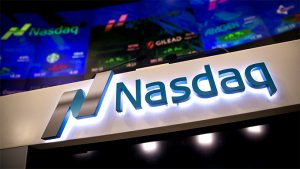Evan Harvey, Nasdaq: Next-Gen ESG – Going Beyond the Basics
 For many years, investors have been searching for more perfect sources of non-financial information: data that may not be on the balance sheet, but still offer material and relevant insight into business value.
For many years, investors have been searching for more perfect sources of non-financial information: data that may not be on the balance sheet, but still offer material and relevant insight into business value.
First, they looked at corporate governance practices – how well the board functions, who provides management oversight, what the risk controls are. As the climate crisis heated up, they began to look for environmental signals, too. How efficiently does the company operate, what kinds of materials does it use, does the business contribute to climate change? Lately the emphasis has turned to social performance indicators, specifically those related to economic access and gender diversity.
These alternative data were categorised as sustainability because – it was argued – they provided a better understanding of the company’s ability to sustain its operation, and its competitive edge over the long term. Lately, the more specific term ESG has emerged. Though by definition ESG means environmental, social, and governance data, the acronym has come to include almost any measurement that cannot be found in a company’s financial filings.
“We expect companies to disclose not only their carbon emissions, and the process whereby those emissions are tracked and trended, but also the emissions of their vendors and suppliers.”
We expect companies to disclose not only their carbon emissions, and the process whereby those emissions are tracked and trended, but also the emissions of their vendors and suppliers. Relatively straightforward metrics like gender diversity have blossomed into categories and subcategories of inquiry. Definitional changes, more sophisticated measurements of inclusion and belonging, and ever more finite gradations in the gender pay-gap.
But despite a rapid increase in the number and complexity of these data signals, they still represent a very primitive understanding of the way business operates. An infinite array of discrete data points could be weighted and arranged in such a way as to give the savvy investor a significant edge. But what if we need more than data points to paint the true picture of a company? Is it time to fundamentally revisit some of our assumptions about ESG value? Two recent developments seem to argue just that.
From Human Resources to Human Capital
Many ESG metrics are managed by the Human Resources department. HR departments (especially in the US) monitor and measure employee demographics to ensure compliance with laws and strategic mandates, to reduce risk-related costs, and to demonstrate a commitment to diversity.
If we look at ESG indicators recommended by the Global Reporting Initiative (GRI), there are many that touch on HR functions: Gender diversity, age diversity, salary comparisons, and so on (GRI 405: Diversity and Equal Opportunity, 2016). A company may provide all that information, and yet reveal little about the underlying cultural health of the organization. And it is exactly that sense of cultural health and productivity that a new discipline – human capital – seeks to illuminate.
As Harvard Economics Professor Claudia Goldin wrote in Human Capital in 2014, “Human capital is the stock of skills that the labour force possesses. The flow of these skills is forthcoming when the return to investment exceeds the cost (both direct and indirect). Returns to these skills are private in the sense that an individual’s productive capacity increases with more of them. But there are often externalities that increase the productive capacity of others when human capital is increased.”
Far from being an amalgamation of specific organisational statistics, human capital represents something intangible: the collective resource value of a company’s employees. If one could tally up the training, experience, skills, judgment, and wisdom embedded in all of a firm’s employees, we would better understand the current and potential value of that human asset.
“We believe the measurement and management of corporate performance should evolve to incorporate social and human capital, alongside financial and environmental measures. We are here to make that happen.”
– Mark Graham, Technical Director for the Social & Human Capital Coalition (SHCC)
The Human Capital Management Coalition (“a diverse group of influential institutional investors [seeking] to further elevate human capital management as a critical component in company performance”) was established last year and already has grown to include 25 asset owners, representing over $2.8tn in assets.
This group is ramping up its advocacy as well. Last year the coalition initiated a petition with the US Securities and Exchange Commission (SEC) to embed Human Capital metrics in required financial disclosures – something the SEC has not done with much effect on ESG itself. More than 30 comment letters, most of them highly supportive, have been filed by other firms and institutions.
In March 2018, the biggest asset manager of them all joined in. “Research has consistently shown the importance of human capital to company performance,” according to a Blackrock statement. The paper further asserted that attention to human capital is part of its “fiduciary duty to protect and enhance the value of our clients’ assets”.
Other market participants are also interested. In April, the World Business Council for Sustainable Development (WBCSD)—a global CEO-led business membership organization—launched its own human capital initiative. “We believe the measurement and management of corporate performance should evolve to incorporate social and human capital, alongside financial and environmental measures,” says Mark Graham, Technical Director for the Social & Human Capital Coalition (SHCC). “We are here to make that happen.”
Climate Reporting Becomes Climate Risk
Environmental performance indicators have undergone a similarly maturing process. Current ESG metrics rely on a basic valuation of environmental drivers: energy consumption, energy reduction, fuel sourcing, water sourcing. When the World Federation of Exchanges (WFE) issued its ESG disclosure guidance in 2015, these were the kinds of data points included. In the years since, there has been a move towards science-based targets (SBTs), which exert more discipline and rigour in the decarbonisation process.
But even the SBTs are, at best, discrete and specific measurements of one aspect of environmental performance.
When the WFE began to revise its ESG guidance this year, it had to take into account the work of the task force on Climate-Related Financial Disclosures, or TCFD. Borne of the Financial Stability Board in 2015, and led by Mark Carney and Michael Bloomberg, the TCFD seeks to upend the way we think about climate reporting in business.
By focusing on capital allocation, risk forecasting and scenario planning, the TCFD offers investors a more holistic understanding of the company’s commitment to environmental responsibility.
Metrics and targets are still included in the TCFD recommendations (published in 2017), but even those data points are pushed into new aspects of performance measurement. TCFD focuses on the process whereby a company determines the right metrics and targets for itself; the internal price on carbon used, rather than an arbitrary disclosure of its consumption; and the amount of investment (OpEx) dedicated to low- or no-carbon alternatives.
Even in its call for scenario planning – difficult to do, and something companies rarely undertake in other areas – the TCFD argues for reporting on multiple potential outcomes. How will two-degree rise in temperature affect access to materials? What will a company’s energy mix look like in 2040? How much water will be needed, and where will it be sourced?
Time will tell if the TCFD idea really catches on, becoming the new standard for climate-related corporate reporting; only a handful of large companies are embedding TCFD recommendations into their filings right now. And new research may demonstrate a widening gap between climate awareness and climate action. More than 80% of companies acknowledge physical, financial, and political risks related to the low-carbon transition, but a much smaller percentage are actually taking meaningful steps to handle that transition (Ready or Not: Are companies prepared for the TCFD recommendations? CDSB and CDP report, March 2018).
You may have an interest in also reading…
Technological Innovation Must Power Economic Growth in Africa
Technology, science and innovation play a key role in the development of Africa, United Nations officials stressed today, calling on
Braggarts Become Leaders
By Hillary Rosner, a freelance journalist based in Boulder, Colorado. Based on the research of Ernesto Reuben, Pedro Rey-Biel, Paola
UN: Education and Youth Unemployment Issues Must be Addressed Now
The process of establishing a post-2015 development agenda must include youth input and participation to reflect the issues that concern



















































































